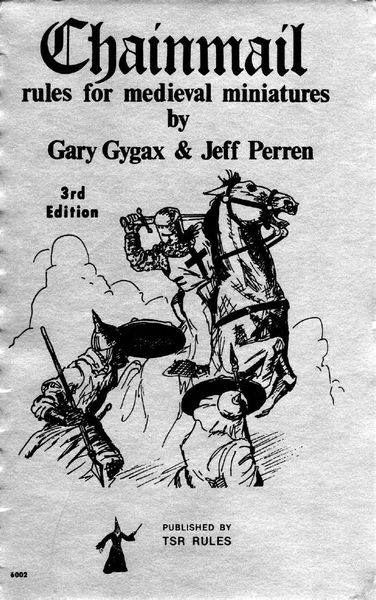Chainmail (1971) Board Game
Chainmail is a classic tabletop wargame that was first released in 1971 by Guidon Games, later acquired by Tactical Studies Rules (TSR). It was designed by Don Lowry and has become a staple in the world of miniatures gaming. The game is set in a fantasy medieval world, where players control armies and battle for supremacy on the tabletop battlefield.
Game Components of Chainmail
How To Setup Chainmail
To set up Chainmail, players begin by laying out the terrain blocks to form the desired battlefield. This can include various features such as hills, forests, and rivers. The terrain selection is crucial as it can significantly impact the game, with the side having a terrain advantage often needing to balance this with a weaker army. Players then deploy their miniature figures on the battlefield, organizing them into formations as medieval military commanders would. The game can be set up to recreate historical battles or fictional scenarios, offering a high degree of flexibility and creativity.
Gameplay Mechanics and Game Objective
Gameplay Mechanics
Game Objective
Player Experience
Playing Chainmail is a complex and immersive experience that combines strategic planning with the unpredictability of dice rolls. The game requires a significant amount of setup and planning, making it more suited to players who enjoy detailed wargaming. The morale system adds a dynamic layer, as units can quickly turn from combat-ready to fleeing in panic. The game’s flexibility allows players to recreate historical battles or invent their own scenarios, making each game unique.
Pros
Cons
Personal Thoughts on Chainmail
Chainmail is a game for the dedicated wargamer and those with a strong interest in the historical and mechanical roots of D&D. It is not a game for casual players or those looking for a quick, simple experience. Instead, it caters to enthusiasts who appreciate the complexity and depth of miniature wargaming. For those willing to dive into its intricate rules and mechanics, Chainmail offers a rich and rewarding experience that combines strategy, history, and imagination. However, it may not be the best fit for players seeking a more streamlined or modern RPG experience.
We are supported by our audience. When you purchase through links on our site, we may earn an affiliate commission, at no extra cost for you. Learn more.

